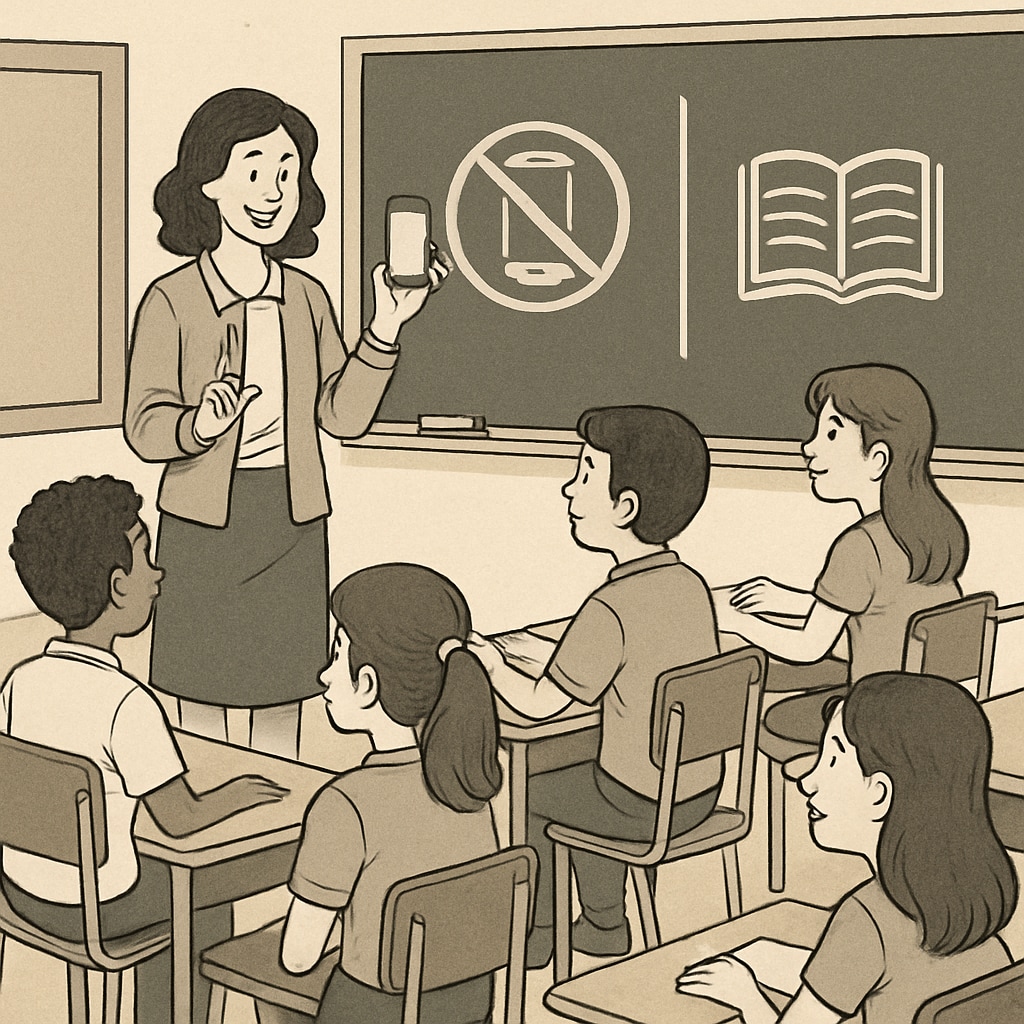As school phone bans become increasingly common across states, questions arise about their effectiveness in tackling issues like school safety, education resource gaps, and student privacy. While many educators and policymakers view these bans as a quick fix to classroom distractions and security concerns, are they truly addressing the root of K-12 education challenges? Or are they merely sidestepping deeper systemic issues? This article delves into the multidimensional impacts of school phone bans and explores alternative solutions that prioritize inclusivity and forward-thinking approaches.
Examining the Impact of School Phone Bans
School phone bans are often justified by the need to create focused learning environments and ensure student safety. Proponents argue that smartphones contribute to classroom distractions, cyberbullying, and unauthorized recording, all of which can compromise the educational experience. However, while banning phones might reduce these risks on the surface, it fails to address the underlying causes of such behaviors.
For example, distractions in class often stem from ineffective teaching methods or lack of engagement with course material. Similarly, cyberbullying is a societal issue that extends beyond school grounds, requiring comprehensive education on digital citizenship rather than solely restricting access to technology. Policies that focus on banning devices rather than fostering responsible usage often miss the opportunity to equip students with critical skills for navigating the digital world responsibly.

School Safety vs. Student Privacy: Striking the Right Balance
One of the most debated aspects of school phone bans is their impact on student privacy. While the intention may be to enhance school safety, restricting phone usage can inadvertently limit students’ ability to communicate in emergencies or access personal resources. For instance, during incidents like natural disasters or lockdowns, students may rely on their phones to contact family or seek help.
Moreover, enforcing phone bans often requires monitoring students’ devices, which could breach their privacy. Schools must weigh the benefits of these policies against the ethical implications of surveillance. Instead of outright bans, schools could adopt policies that allow limited and controlled use of phones while teaching students about the importance of privacy and responsible digital behavior.

Exploring Inclusive and Forward-Thinking Alternatives
Rather than banning phones outright, schools could adopt alternative strategies that integrate technology into the curriculum while minimizing disruptions. Here are some potential solutions:
- Digital Literacy Programs: Teach students how to use technology responsibly, including lessons on online ethics, privacy, and cyberbullying prevention.
- Controlled Phone Usage: Allow phones during designated times or for specific educational purposes, such as research or collaborative projects.
- Monitoring Apps: Utilize software that restricts access to non-educational apps during school hours without entirely banning phones.
- Teacher Training: Equip educators with strategies to manage technology in the classroom effectively, ensuring phones enhance rather than hinder learning.
These approaches not only address the issues that school phone bans aim to solve but also prepare students for a world where technology is omnipresent. Schools that embrace balanced policies can transform phones from distractions into powerful educational tools.
Conclusion: Rethinking School Phone Policies
While school phone bans may seem like a straightforward solution to classroom disruptions, their long-term effectiveness and impact on students’ rights remain questionable. To truly tackle the challenges of K-12 education, schools must move beyond reactive policies and invest in proactive strategies that address the root causes of these issues.
By fostering a culture of responsible technology use, prioritizing student privacy, and bridging gaps in education resources, schools can create environments that are both safe and conducive to learning. As education continues to evolve, it is essential to assess whether restrictive policies like phone bans are solving problems or simply masking them.
Readability guidance: The article uses concise paragraphs, lists to summarize key points, and aims for a balance of active voice and overuse of long sentences. Transition words are utilized throughout to ensure seamless flow.


